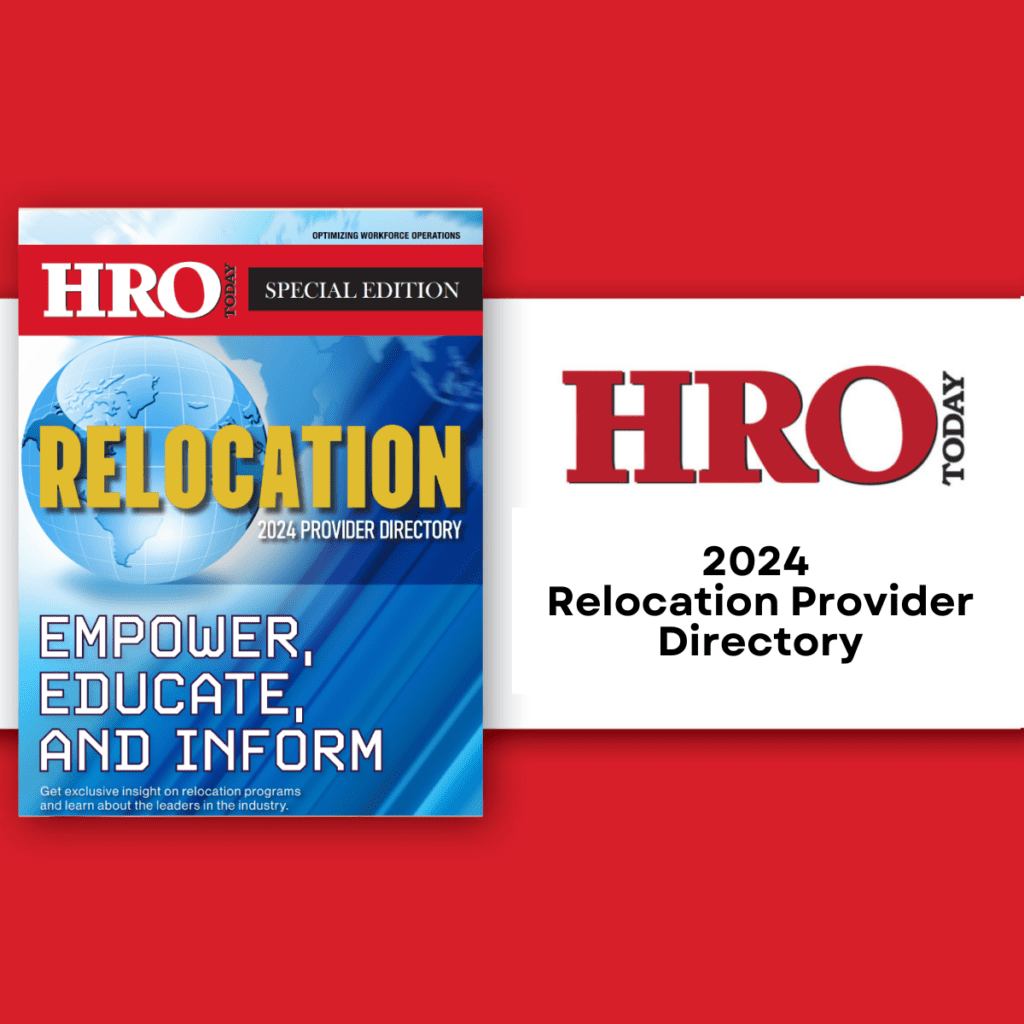The value of global relocation assignments can be a complicated calculation.
By Audrey Roth
Relocation assignments are on the rise with 50 percent of multinational companies expected to increase the number of employees they transfer during the next two years, according to the 2014 Trends in Global Relocation: Global Mobility Policy and Practices survey from Cartus. Companies are continuing to value the importance of mobility programs, yet tracking both cost and return on investment is still an obstacle that many organizations have yet to overcome.
Relocation assignment costs can reach millions of dollars in spend, yet only 62 percent of organizations track costs during their relocation assignments finds Brookfield Global Relocation Services’s 2015 Global Mobility Trends Survey. A company may intend to spend within their budget, but without actually tracking costs during the assignment, there will not be data on how money was spent and how to reduce cost in the future. Without data, organizations cannot make sure they are staying within their budget, and they cannot even attempt an ROI examination.
“We track our relocation spend not only so we can understand the overall cost to the company, but also to help identify trends in the placement of talent,” says Johnna Moran, global employee mobility manager of human resources for Symantec Corporation, users of Graebel Relocation. “Understanding these trends ensures we are properly supporting our overarching business strategy. Analyzing how relocation dollars are being spent also enables us to identify possible shifts in how our employees are utilizing their available funds, thereby enabling us to proactively adjust our policies to better address the needs of the relocating employee.”
Although tracking costs results in benefits, organizations may become frustrated due to its difficulty, especially when working with a lack of resources. Attempting to manage costs via spreadsheets or expense reports based on assignment can be challenging to maintain. “The organizations that do not track relocations costs are typically either short staffed, without a robust technology platform to facilitate the tracking, or they do not have an outsourced partner to assist in this tracking,” says Jason Exley, regional vice president of western region at MSI Global Business Solutions.
The 2014 Global Mobility Policy and Practices report from Cartus found 75 percent of respondents named cost control as the top global mobility challenge in terms of future impact on their organization. Although tracking costs can be a tricky undertaking, abiding by a few best practices can make the process easier.
- Take advantage of expert technology. “There are many different technology platforms that assist with cost budgeting and tracking and many relocation companies have their own technology as well that makes the tracking and reporting of relocation costs easy,” says Exley. Companies may even have mobile applications that make the expense process easier. “You can take pictures of a receipt or just submit expenses on your phone.”
- Centralize the process. The mobility function should be centralized. Make sure to set guidelines so that all costs are being congregated in a central location, explains Paul Sorrentino, vice president of corporate partnerships for NuCompass Mobility Services. During a relocation assignment, organizations need to track assignment- related costs plus the standard costs occurring with the rest of the organization; the different expenses can easily get muddled. Without these costs being organized systematically, the information is useless and unnecessary spending can go unnoticed.
- Ensure cost projections for every assignment. Companies can make a cost estimate during the pre- approval phase of a relocation assignment. “Some use cost estimates created in the planning stages of an assignment and never revisit them while others do a careful job of tracking actuals to estimates, either quarterly or at the end of an assignment,” says Tim O’Shea, vice president of consulting services for Graebel Relocation. Organizations that take the latter route are oftentimes more sufficiently staffed with a centralized global mobility process. The initial cost estimate can easily be thrown off course due to the various possible factors affecting expenses.
- Maintain compliance. Whether the assignments are short term or long term, spending cannot be controlled without a projection. This can affect tax issues for both companies and relocating individuals. “Getting a handle on the potential tax costs is important, and a thorough cost projection is critical,” says O’Shea.
“If you don’t have a robust system to track what you’re spending and what you’re costs are, and you don’t have a partner or a process to record those appropriately,then there are huge compliance issues, not only for the organization from a payroll perspective, but for the employee. Employees can be caught up in IRS audits,” says Exley.
- Utilize external expense management. The wide array of costs associated with relocation assignments can be hairy without the proper support, so using a relocation management firm for all aspects of global mobility is an easy avenue for efficiency. “There is simply too much to track and be aware of for most organizations to handle global mobility on their own, unless they can employ specific expertise in this area and provide all the necessary tools, education and support,” says Sorrentino. “With the right data collection processes in place, the organization can then begin to analyze the information and start drawing conclusions or seeing trends in their global activity.”
- Have continued collaboration and review of assignments. Develop an internal team from different departments such as finance, compensation, mobility, and HR. The team can meet regularly to review the cost projections against actuals, says O’Shea. “The more you meet to review and discuss, the more you’ll find better ways to communicate to business leaders about the value the mobility program brings, and it helps keep everyone’s expectations clear about total cost for any assignment.”
Gail Kelly, director of global relocation at Colgate- Palmolive, who works with Weichert Relocation, says they track cost of all assignments. She reports that they share the cost tracking information with finance for annual reporting and comparisons, utilizing collaboration for efficiency.
Smarter Spend
Although cost remains a primary concern, 88 percent of respondents to Brookfield’s 2015 Global Mobility Trends Survey expect their international assignment population to increase (43 percent) or stay the same (45 percent). The increase is not solely reflective of a decrease in expense, but with the changing attitude of desire toward experiencing a relocation assignment. They are now commonly considered very beneficial to career growth and many employees, especially millenials, are expecting these potential opportunities. “What this means for organizations is they are moving a lot more people, especially globally, and even some domestically, depending on the industry that they’re in,” says Exley. Although the increase in assignments does not entail a decrease in price, the upsurge encourages smarter spending choices.
One way cost can be controlled is with shorter assignments, which require less expense. “If a company can send four three-month business travelers for the price of one long-term assignee, it has to consider the bang for the buck,” says O’Shea. Sometimes this is not an option, as specific employees necessitate longer relocations and higher costs. “A senior, experienced leader may be the only solution and companies accept the cost for that kind of assignment.”
“One trend that seems to be emerging is the philosophy that since the employee’s career benefits from an international assignment, the employee should be willing to co-invest with the organization in the costs of the assignment,” says Sorrentino. “This can occur, for example, in reduced support payments to the employee, with the expectation that they will pay part of their own assignment costs, particularly if the employee has no living costs in the origin location.”
As relocations continue to rise, employees and employers alike will both have more reasons to be interested in new assignments.”Increased use of these alternative policies can drive a reduction in the average overall mobility spend per assignment,” says Jen Tanella, vice president of global mobility and HR consulting at TheMIGroup. “This flexible policy approach also offers more options to the business manager who may otherwise shy away from sending someone on an assignment due to the high costs that accompany a traditional policy.”
Despite the high costs associated with international assignments, which employers are attempting to combat, 95 percent of companies don’t measure international assignment ROI, according to Brookfield. Of these companies, the most commonly cited reason (53 percent) is because they don’t know how get it right. “Tracking the hard costs of an assignment (the investment) is easy, however, where it becomes difficult is quantifying and measuring the objectives of the assignment, which tend to be long term extending beyond the end of the assignment and often include goals that may be intangible or even subjective,” says Tanella.
The benefits of a relocation assignment are not necessarily immediate, financial, or tactical, causing a complex ROI equation. “Ask five companies with relocation programs about ROI and you’re bound to get five different answers,” says O’Shea. “I think there is no commonly accepted way to define ROI in a quantifiable way. Companies care about the return and have their own approaches to defining what that return is.”
Certain types of assignments are easier to measure than others. A short-term or immediate assignment, such as opening a new retail shop or service center, has clear metrics. Says Sorrentino, “The benefits for this type of assignment can be measured by increased sales volume or new customers with the assumption that without that assignment, the new customer base would not have been established.”
But other assignments present bigger challenges. “This involves assignments that are designed to integrate different cultures within an organization, bring new thinking to a particular area, investigate the possibility of offering a product or service in a new market, or grooming specific employees to advance within the organization,” says Sorrentino. “The effect of these assignments may be very long term or hard to identify, and since there may be no direct sales increase data or other obvious proof of the value of the assignment, it can be very difficult to measure. ”
Organizations can look at how their workforce is impacted rather than just the numbers. “Are we retaining repatriated expats? Are our domestic transferees more likely to get promoted? What is the level of employee engagement among the expat population compared to everyone else?” says O’Shea. “When companies start to create models that enable them to tie HR metrics to mobility metrics, you’ll see a transformation in how this industry talks about ROI.”
Most importantly, companies need to define what they care about in their return to begin to get a footing in determining ROI. “Organizations can measure ROI, but they must have a clear picture of what they expect to gain from an assignment, and the data to balance the costs of the assignment with the benefits of the assignment,” says Sorrentino. “This has posed a problem for two primary reasons: organizations are unclear about what the value of the assignment might be, and they don’t have the data through which to make a comparison.”
Making goals of the relocation assignment clear allows a comparison to be made between the end result and the intended result. “Companies that are successful at this establish clear assignment goals up front. Both short- and long-term goals are recommended. Aligning these goals with the performance management process and performance goals is ideal,” says Tanella. This can still prove difficult, especially when dealing with long-term assignments or those with long-term effects that can extend beyond the mobility team’s analysis, but keeping these considerations in mind helps to provide an ROI strategy.
This is where companies struggle: They know the costs, but they cannot quantify what success looks like. “People don’t always take the time to be strategic and pull the business goals together. They’re moving fast, they relocate their employees, and they might track how they’re doing, but they’re not necessarily tying it to business goals,” says Exley.
“A successful program produces two desired outcomes: the support of business objectives and a satisfied employee,” says Moran of Symantec’s relocation program. “We examine overall spend to ensure we are staying on target with our budgets and to provide a good point for analyzing our ROI. We also examine how budgets are utilized to ensure we maintain employee satisfaction with proactive adjustments to our program offerings.”
Kelly of Colgate-Palmolive says they examine transferee survey results, mandatory services such as cross-cultural training, and how quickly they can achieve employee effectiveness in a new position and settling the family to ensure their relocation program is beneficial. Focusing on goals for the assignment’s result ensures a valuable process that provides metrics to examine.
Regardless of the challenges around ROI, the increase in assignments is not letting up and organizations need to step up to the plate to ensure a valuable program. “As long as global markets remain relatively stable and opportunities for expansion exist, organizations will be forced to compete in the global arena,” says Sorrentino.
“Better tools to analyze and connect massive data sources are going to change how ROI is defined. Most organizations see the critical need for a big data strategy but rarely does that extend to its mobility program,” says O’Shea. “Once it does -and that time is in the very near future -any organization with a hint of a strategic perspective about its mobility program will embrace measuring return, but with a focus on the HR components of its investment.”














